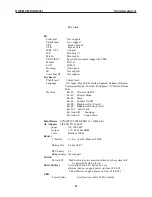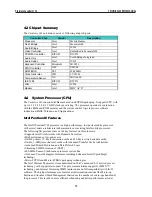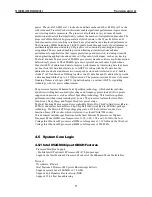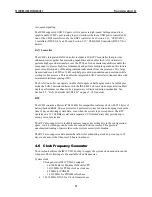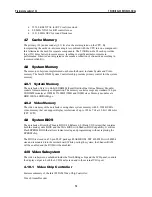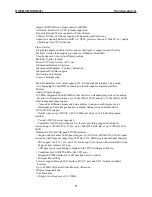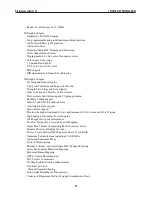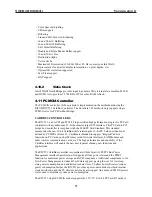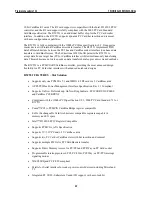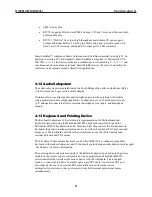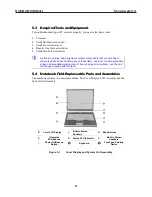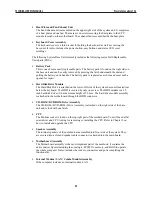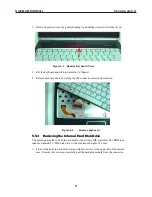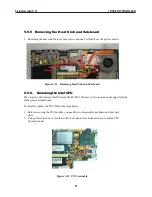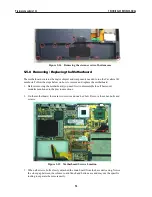
•
LED Activity Pins
•
R5C551 supports D3cold state PME# wakeup; 3.3Vaux Power; and Zoomed video
buffer enable pins
•
R5C551: "Built-in" live video, high throughput, multimedia ZV ports support
without additional buffers; 3V card protection during host system suspend with
Auto Card VS# resensing; dedicated ZV output port to LCD controller
SmartCardBus
™
combines a Smart Card reader and CardBus controller in a single IC. In
addition to meeting PC Card standards, SmartCardBus is compliant to Microsoft PC/SC,
ISO 7816-1, -2, -3 electrical specifications, standard protocols including T = 0, T = 1, and
synchronous and asynchronous formats. SmartCardBus lowers the cost of ownership of e-
commerce and corporate security Smart Card applications.
4.12 Audio Subsystem
The audio subsystem is integrated inside the South Bridge chip on the motherboard. Refer
to the System Core Logic section of this chapter.
An internal two-way mini speaker and microphone provide the notebook with mobile
sound generation and recording capabilities. In addition, a set of 3.5mm bayonet socket
(1/8
”
minijack) connectors allow for external microphone, line inputs, and headphone
outputs.
4.13 Keyboard and Pointing Device
The Keyboard Subsystem of the notebook is implemented on the Motherboard and
Keyboard Assembly using the Mitsubishi M38859 keyboard controller chip and the
Mitsubishi M38859 keyboard controller firmware. This chip controls the internal built-in
keyboard, the built-in touchpad pointing device, as well as the external PS/2 keyboard and
mouse port. The keyboard controller allows simultaneous use of both the internal and
external keyboard and PS/2 mouse.
The Cavaliere 142 membrane keyboard is an 86-key IBM 101-key enhanced compatible
keyboard with standard characters and 12 function keys including an embedded numeric keypad.
See Chapter 1 for more information.
The pointing device subsystem consists of the built-in Synaptics touch pad pointing device
module on the system top cover assembly and a pre-programmed Mitsubishi M38859
micro-controller that interfaces the mouse device to the Motherboard. The touch pad
module is connected to battery board through a 6-pin FPC cable. An external PS/2 port
also supports the use of an external PS/2 compatible mouse where the system
automatically detects on system power up and runs both internal and external mouse
simultaneously.
TECHNICAL SERVICE MANUAL
Prestigio Cavaliere 142
81

